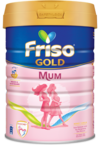Apakah susu yang paling sesuai untuk ibu mengandung?
Susu untuk ibu hamil membekalkan nutrien yang penting untuk kesihatan .... read more

That’s it, you’re pregnant! Congratulations are in order. But now, you’re curious about how your child is going to develop in your belly. What will he or she look like as they grow inside your belly? How will you feel when they move and kick about? Let’s take a peek inside your womb to see how your child develops from month to month.
When the sperm meets and penetrates the egg, it’s called fertilisation. It’s also known as conception! At this moment, the genetic makeup is complete, and that includes if your child is going to be a boy or a girl! Within three days after conception, the fertilised egg is dividing itself very fast into many cells. It passes through the fallopian tube into the uterus, where it attaches to the uterine wall. The placenta, which will nourish your child, will also start to form.
At 4 weeks or one month, your child is developing the structures that will eventually form into their face and neck. The heart and blood vessels will continue to develop. The lungs, stomach and liver start to develop. If you try out a pregnancy test now, it will show up as positive!
Your child is now a little over half an inch in size! Their eyelids and ears are forming, and you can also see the tip of the nose. The arms and legs are well-formed, and the fingers and toes grow longer and more distinct.
Your child has grown about 2 inches now and they will also start to make their own movements. You may feel the top of your uterus above your pubic bone. Your child’s heartbeat can also be heard now, via a doctor’s special instruments. Your little’s one sex organs should also become clearer.
Your child should now measure about 4.3 inches to 4.6 inches. You should be able to feel the top of your uterus about 3 inches below your belly button. Your child can now blink, and their heart and blood vessels are fully formed! Their fingers and toes also now have their own fingerprints.
Your child should weigh about 10 ounces now and is a little more than 6 inches long. Your uterus should be at the level of your belly button. Your little can now also suck a thumb, yawn, stretch and even make faces! Very soon, if you haven’t experienced it already, you can feel your child move inside your belly, which is also known as “quickening”.
At around week 20 for pregnant women, it is usually time for an ultrasound. During this ultrasound, your doctor will make sure that the placenta is healthy and attached normally – and that your child is growing properly. You can see your child’s heartbeat and movement of their body, arms, and legs on ultrasound. You can usually find out if your child is a boy or a girl during this time.
Your child should now weigh about 1.4 pounds and responds to sounds by moving or increasing their pulse. You might even notice jerking motions if they hiccup. With their inner ear fully developed, your child may also be able to sense being upside down in the womb.
Your child should now weigh about 2 pounds and 6 ounces, and they position often at this point in pregnancy. It’s possible to experience premature labour now, so ask your doctor about pre-term labour signs. Now, it’s time for you to register for birthing classes. Birthing classes can prepare you for many aspects of childbirth – this includes labour, delivery, and taking care of your new-born child.
Your child weighs 4 pounds and moves around often. Their skin has fewer wrinkles as a layer of fat starts to form under the skin. Between now and delivery, your child will gain up to half their birth weight. Ask your doctor how to do a foetal movement chart. Think about breastfeeding. You may also notice a yellowish fluid leaking from your breasts. Don’t worry; that’s colostrum, and it happens to get your breasts ready for making milk. Most mummies go to their doctor every two weeks at this stage of their pregnancy.
Depending on many factors, your child's differ in size. These factors include gender, size of the parents, etc. Your child’s rate of growth is as important as the actual size. On average, child's at this stage is about 18.5 inches and weigh close to 6 pounds. The brain has been developing rapidly. Lungs are also nearly fully developed. The head is usually positioned down into the pelvis by now. Your child is considered at ‘term’ when they are at 37 weeks. They are at an early term between 37 to 39 weeks, at term, if they’re 39 to 40 weeks and late term if they’re 41 to 42 weeks.
A mummy’s due date marks the end of their 40th week in their pregnancy journey. The delivery date is calculated using the first day of their last period. Based on this, pregnancy can last between 38 and 42 weeks with a full-term delivery happening around 40 weeks. Some post-term pregnancies – those lasting more than 42 weeks – are not really late. The due date might not just be accurate.
And that’s it! We hope this month-by-month playbook will help you on your pregnancy journey. As with many guides, accurate numbers and dates may differ, depending on the mummy. But if you have any burning questions about your child or your pregnancy, be sure to check with your doctor for more information.


